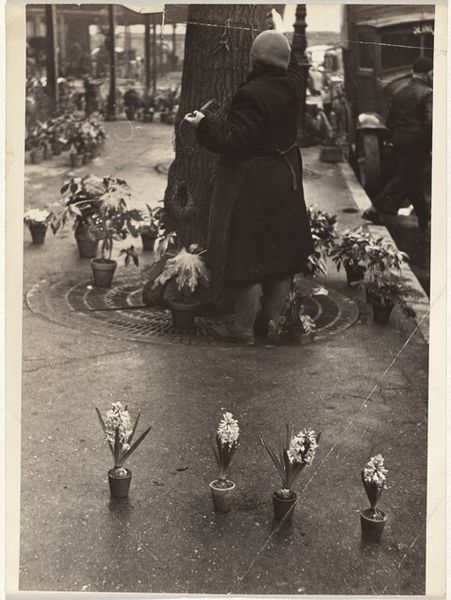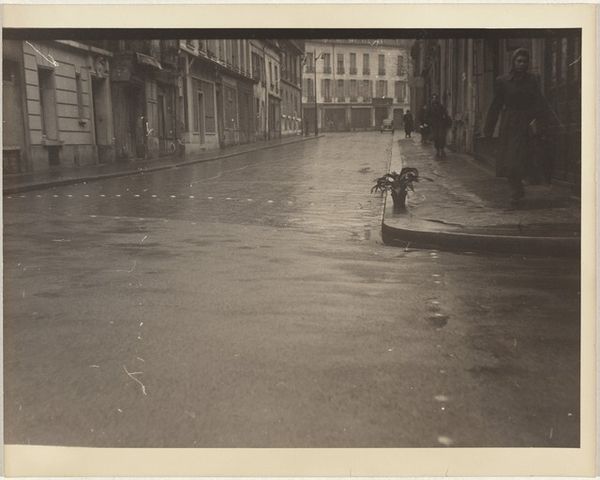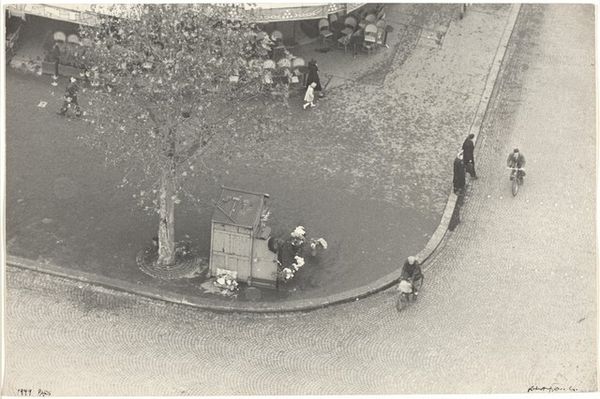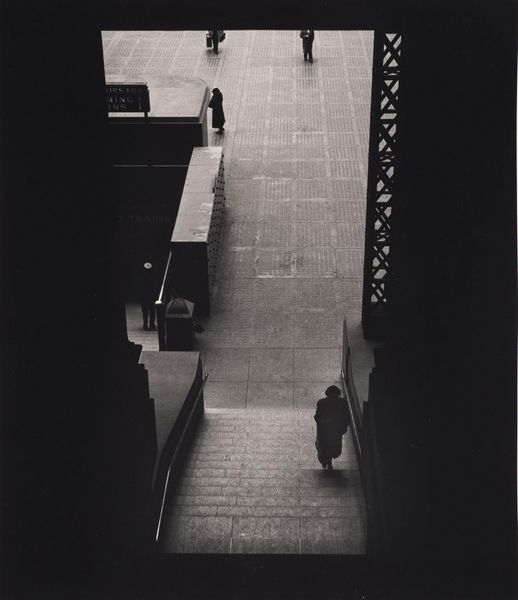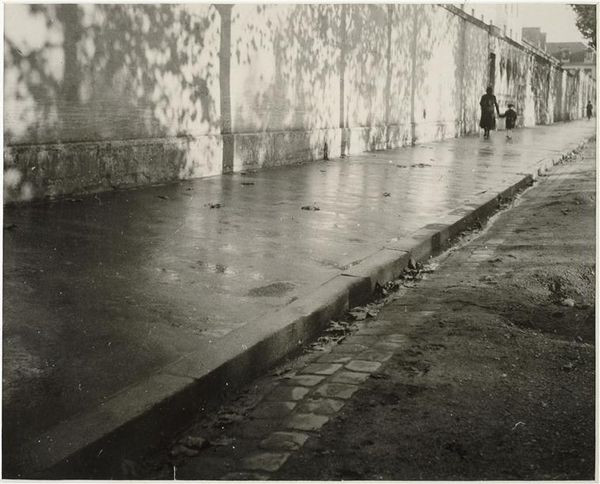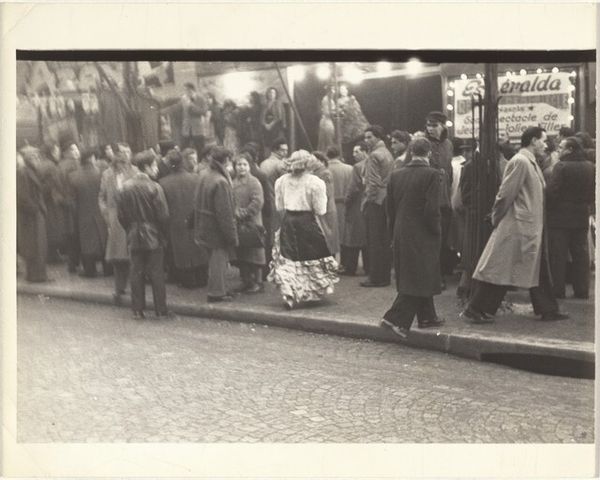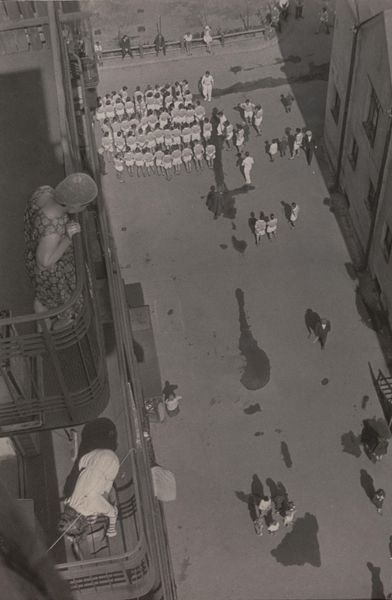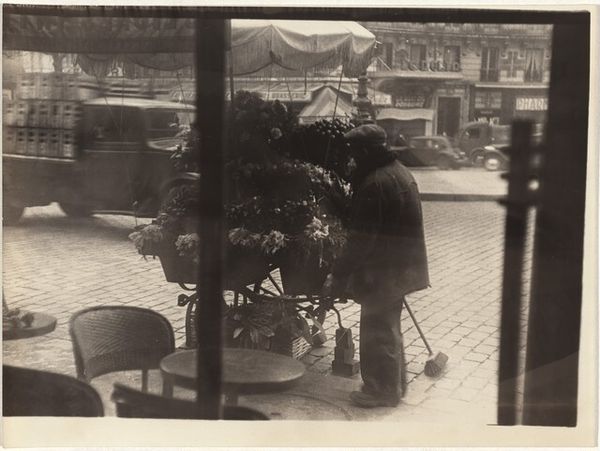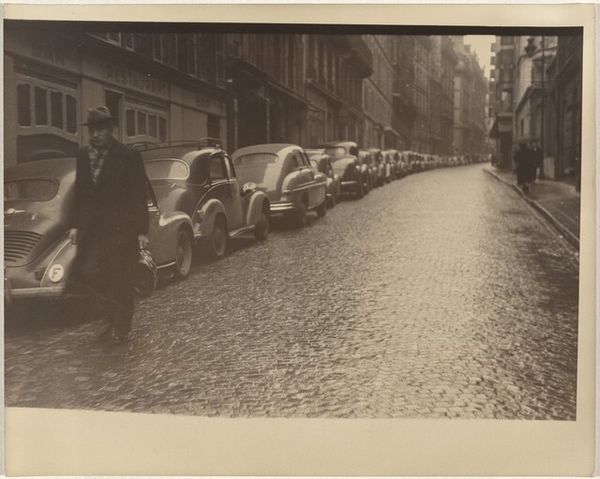
print, photography
# print
#
landscape
#
street-photography
#
photography
#
cityscape
#
realism
Dimensions: sheet: 17.8 x 23.8 cm (7 x 9 3/8 in.)
Copyright: National Gallery of Art: CC0 1.0
Curator: Here we have Robert Frank's "Flower vendor on street, Paris," taken in 1951. The print medium is black and white photography. Editor: It strikes me as melancholy, yet there is beauty within the banality. It also shows a contrast with the heavy and bulky shape of an elderly woman on the left-hand side and a very visible car from behind the flower stand, perhaps a means of delivery. The texture of the old tree is the first thing my eyes land on and how this image balances the personal against the commercial. Curator: Precisely! The placement of the flower vendor amidst the gridded street and the sturdy tree anchors her to a place but simultaneously evokes the working life, as opposed to street vendors of luxury goods that create public spectacles. Editor: It speaks to the commodification of nature, doesn't it? Look at the mass-produced flowerpots against the rawness of that enormous tree. And the vendor, framed against what seems to be a work truck, blends in the grayness. Is he pointing to a tension in Parisian life post-war? Curator: Absolutely. And Frank's choice of black and white film isn't merely an aesthetic one; it strips away any romantic notion of the "City of Lights" and presents Paris as a functional, almost austere space. Editor: I agree; the grainy texture lends itself well to a post-war visual experience in which people struggle economically. How were these flowers procured? What means of production sustained this trade in blossoms? Where exactly the woman came from? I bet that in this photograph lies a very human story of surviving. Curator: Frank, I believe, captured the societal and economic forces at play in a rapidly changing post-war Europe. This wasn’t just a picturesque scene; it's evidence of how society organizes itself, trades, and endures. Editor: It pushes us to ask about the means of survival and artistic rendering. The flowers become material; the labor becomes more tangible. Curator: Exactly! We depart today with a stronger grasp of art as labor, as political assertion, and the intersection of materiality and memory.
Comments
No comments
Be the first to comment and join the conversation on the ultimate creative platform.
